
Carbon County is a county located in the U.S. state of Montana. As of the 2020 census, the population was 10,473. Its county seat is Red Lodge.
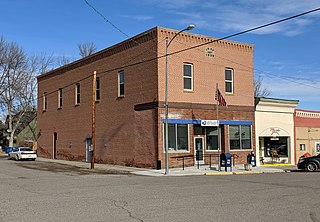
Fromberg is a town in Carbon County, Montana, United States. As of the 2020 census, the population of the town was 392.
Samuel Wilford Gebo (1862–1940) was an American entrepreneur influential in the early development of the U.S. state of Montana. Born in Canada in 1862, Gebo grew up near Ogdensburg, New York, and lived briefly in Minnesota before settling in Montana in the early 1890s.
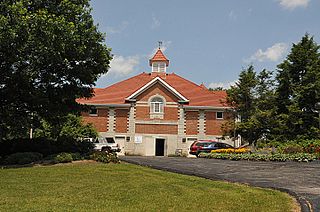
The Anna–Dean Farm is a historic farm in Barberton, Ohio, United States. It is listed on the National Register of Historic Places and is the site of several structures independently listed on the Register.

The John Scott Farm is a historic farmstead near the community of Shandon, Ohio, United States. Established in the nineteenth century and still in operation in the twenty-first, the farmstead has been named a historic site because of its traditionally built agricultural structures.
The Rio Grande Ranch Headquarters Historic District is a historic one-story residence located 3 miles (4.8 km) east of Okay in Wagoner County, Oklahoma. The site was listed on the National Register of Historic Places September 9, 1992. The site's Period of Significance is 1910 to 1935, and it qualified for listing under NRHP criteria A and C.

Rooney Ranch is an historic ranch near Morrison, unincorporated Jefferson County, Colorado. The ranch is one of Colorado's oldest centennial farms and is the oldest property continuously operated by the same family in Jefferson County.

The Charles Boyd Homestead is a group of three buildings that make up a pioneer ranch complex. It is located in Deschutes County north of Bend, Oregon, United States. The ranch buildings were constructed by Charles Boyd between 1905 and 1909. Today, the three surviving structures are the only ranch buildings that date back to the earliest period of settlement in the Bend area. The Boyd Homestead is listed as a historic district on the National Register of Historic Places.

Manistee Ranch was founded in 1897 by Herbert W. Hamilton, a native of Wisconsin. The ranch, located in the town of Glendale, Arizona, was rich in citrus fruits and dates. The ranch has all of its historical structures restored. It is administered by the Parks and Recreation Department of Glendale.
The Thexton Ranch, also known as Thextondale, was established by George Thexton in 1872 on the Madison River about 7 miles (11 km) south of Ennis, Montana. The ranch is a significant example of an operating Montana ranch, and has been listed on the National Register of Historic Places for its prominence in local history and its character as a ranching operation.
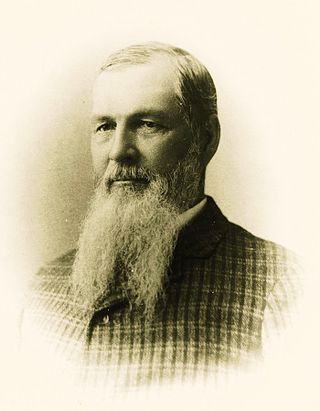
Noah Armstrong was a superintendent of the Glendale smelter and discoverer of the Hecla Mine in western Montana. Later in life he moved to Seattle, where he established the Seattle Transfer Company.

The Ezekiel Emerson Farm, also known as Apple Hill Farm, is a historic farm property at 936 Brandon Mountain Road in Rochester, Vermont. Occupying 38 acres (15 ha), the farm includes a mid-19th century bank barn and a c. 1920-1940 milk barn that are both well-preserved examples of period agricultural buildings. The house includes a fine example of a Late Victorian porch. The property was listed on the National Register of Historic Places in 2001.
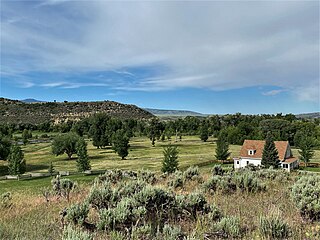
The Stone Wall Ranch, also known as the Reader or Rasmussen Ranch, is a ranch in the Little Snake River valley of Carbon County, Wyoming, about 1.5 miles (2.4 km) from Savery. It was established by Noah and Hosannah Reader in 1871, the first permanent homestead in the valley. A temporary winter shelter was built in the winter of 1871-72, followed by a permanent structure in 1872-73 that survives in the ranch complex. The ranch was named for a nearby sandstone escarpment.

The Los Burros Ranger Station is a forest ranger station situated in Apache County, Arizona. The station was staffed by rangers who traveled to the nearby Lake Mountain Lookout.
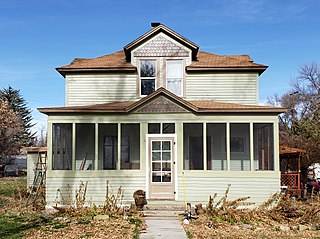
The Hester E. Suydam Boarding House, at 209 W. River St. in Fromberg, Montana, was built in 1907. It was listed on the National Register of Historic Places in 1993.
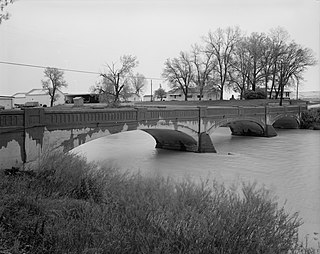
The Fromberg Concrete Arch Bridge, in Fromberg, Montana, was built in 1914. It was listed on the National Register of Historic Places in 1993. It carries River Street over the Clarks Fork Yellowstone River.
Coalville, Montana, also known as Gebo, Montana, was a community by the Gebo Mine, in Carbon County, Montana near Fromberg, Montana.

The Gebo Cemetery, in Carbon County, Montana near Fromberg, Montana, was established in 1899 to serve the coal mining town of Gebo, Montana, which had population of 500 to 1,000 in the early 1900s, but was virtually abandoned after the Gebo Mine ceased operation in 1912. It was listed on the National Register of Historic Places in 1993.
The Henry Gebo House, in Carbon County, Montana east of Bridger, Montana, was built in 1909. It was listed on the National Register of Historic Places in 1987.

The Kuhrt Ranch in Shermanville Township in Sherman County, Kansas, near Edson, Kansas, dates from 1907. It was listed on the National Register of Historic Places in 2001.
















